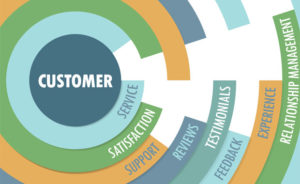Sales talent for a long time has been broken up into three groups: A-players, B-players and C-players. Everyone loves the A-players — they’re the ones who bring home the bacon, after all. The B-players show promise and, with the right training and motivation, could become A-players. The C-players? Well the less said, the better.
This simplistic method of segmenting a sales force has worked for decades, but it dates to an earlier era when the sales process was much simpler. We’re not in that era any more — and the A-B-C method of understanding salespeople is breaking down.
Following are five reasons you should rethink the A-B-C method and start looking for a more modern and sophisticated method for managing your sales force.
1. It’s Unfair to the C-Players
Some C-players really are inept salespeople — which leads to the question, why did you hire them in the first place? However, looking beyond that, many are in the C-team category because they’re young or they’re new to the company.
The average time for a new sales hire to become productive ranges between six and 10 months, research has indicated.
The average tenure of any salesperson is 18 months, according to CSO Insights. That’s not a lot of time for a salesperson to find his or her footing — and in a lot of sales organizations, any new hire who can’t start to excel quickly is likely to be gone quickly.
The sad part about this is that it doesn’t have to be this way. C-players may be getting C’s because they don’t have proper sales op support. They may lack the decent sales enablement solution, sales content and training they need to get to speed in time to become productive.
They may have managers who don’t devote enough time to coach them, among their many other managerial duties. They may have to spend inordinate amounts of time working to understand the machinations of marketing departments confronting their own issues with lead generation.
In any event, many new salespeople are thrown in the deep end and expected to swim. If they don’t, they’re C-players and thus are disposable. In a tight labor market with a shrinking number of good candidates, can your business afford to find and discard these people? Or might it be better to invest in A-level support and training for these salespeople?
2. It’s Unfair to the A-players
Well, sure — the A-players get president’s club, recognition in company meetings, and in some cases more autonomy than their other peers in selling. However, A-players also face some demotivating things that other sales people don’t.
For example, if a C- or B-player ever knocked a quarter’s results out of the park, managers would not reward them by changing their bonus and commission structures, because it would be a morale-crusher and work against those salespeople’s growth.
Yet we see it a lot when an A-player consistently performs well: Quotas increase, accelerators are moved out, commission percentages shrink. It’s almost as if they’re being punished for being consistently successful.
A-players usually are pretty self-motivated, but even the most self-motivated person wants to be treated fairly. Moving the goalposts is no easier to take for a good salesperson than it is for a bad one. You probably want to keep your A-players around — so why is it OK to take liberties with their compensation simply because they’re good at earning it?
3. It’s Unfair to the Business
The Pareto principle for sales suggests that 80 percent of revenue is generated by 20 percent of the sales team. That was a fine model for selling to large enterprises. However, the advent of Software as a Service and the subscription economy has made a mess of the old model.
Enterprise deals are great — but you also need a lot of deals to make a buck in SaaS software. The deal can’t just be about getting the signature on the contract. Without renewals, every first- or-second year customer will cost you money.
Relying on A-players alone will fail to bring in enough revenue or deliver a customer experience that will contribute to customer loyalty. You need to ensure that every player on the sales team is contributing to your sales success — you can’t afford to carry salespeople you consider C-players, because you need the volume in order to survive.
Furthermore, putting the onus on the A-players is likely to result in rushed sales and a diminished customer experience. A-B-C thinking doesn’t work in an era when customer volumes and customer experience are critical considerations.
4. It’s Unfair to the Customer
A-B-C-player thinking came out of an era when the customer had one point of contact with the seller — one key decision maker talked to one salesperson. Those days are over. The average deal involves seven or more decision makers, and the seller may call on resources ranging from sales engineers to professional services staff and beyond, including other members of the sales team.
The buyer may speak to several sales people over the course of the deal. If you’re still working with an A-B-C-player mindset, you’re probably giving the customer a buying experience that’s inconsistent at best.
Smart businesses are studying what A-players do to build rapport and create a better buying experience — and that includes understanding how they use their own talent and resources. Then, they work to train everyone on the successful practices of the A-players to give them the ability to deliver a similar experience.
Doing this enables the sales effort to be better coordinated and present consistently good experiences for buyers, regardless of who they are talking to or what their role in the buying organization happens to be.
5. It’s Obsolete
Selling no longer depends on the agent who’s a great talker taking command of the conversation and talking his way to a deal. Customers have evolved, and 74 percent of all B2B buyers do at least half their research on the Web before contacting a company, according to Forrester. The buyer has seized control of the conversation, which takes the bat out of the hands of the traditional A-players.
As the customer evolves, the role of the salesperson is evolving too. Salespeople must be able to answer more specific and often technical questions, making their ability to learn and to articulate new ideas as important as their traditional selling talents.
It also means salespeople will need to devote more time to learning. The best performers in the future may be the ones who are the quickest studies and the most effective explainers rather than the sharpest pure sellers.
This new era of customer demand for greater expertise means longer and more intimate engagements. The A-players will be spread thinner than ever, and the B- and C-players must step up.



























































Social CRM
See all Social CRM